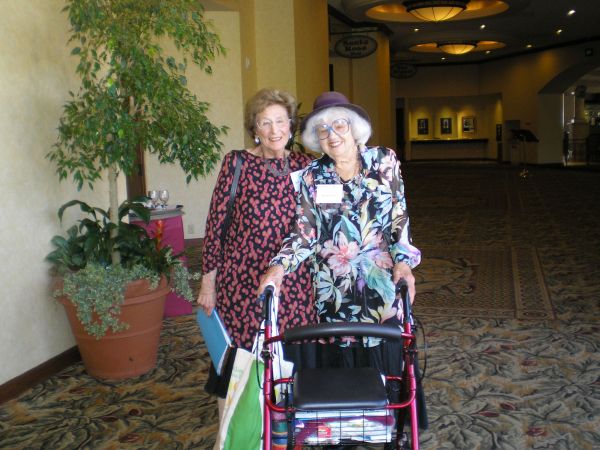Providers Turn Eyes to the Aged
Huge Gathering a First for Nonprofits, Government Officials
Shinning a light on the everyday struggles that go hand in hand with being old, from not being able to board a bus to failing at simple household chores, was the aim of a day-long conference at the DoubleTree Resort on Wednesday, September 3. Roughly 180 service providers, government officials, and philanthropists set their own admittedly less problematic routines aside to attend the event, which included two hour-long brainstorming sessions.
“It seems that over the years, so many resources have gone into other things and seniors have been sort of out of sight and out of mind,” said 1st District Supervisor Salud Carbajal, an event organizer.
But with the baby boomers hurtling toward retirement, keeping seniors out of mind may not be a luxury the county, or any governmental entity, can afford much longer. In fact, with people over 85 now the fastest growing segment of the population, by mid century, they are set to outnumber teenagers.
May Aydin of UCLA’s Center for Health Policy Research provided statistics comparing Santa Barbara seniors to seniors in the rest of the state. On matters of economic, physical, and mental health, people over 65 here fare better than California seniors as a whole, with one in five living at or below 200 percent of poverty level, compared to one in three statewide. Just nine percent of seniors here reported having bouts of mental distress in a survey that did not, however, include seniors in assisted living or skilled nursing facilities. On the other hand, half of the over-65 population here is overweight or obese, half take medication for depression, and more seniors here reported having multiple falls in 2004 than in the state as a whole.
Lynn Doucher, director of the state’s Department of Aging, which allocates federal and state dollars to the 31 Area Agencies on Aging (AAA) in California–including the AAA serving Santa Barbara and San Luis Obispo–urged all those associated with senior-serving community based organizations (CBOs) to collaborate “Don’t wait for a pile of money to come down from Sacramento because it’s not coming,” she said. “You have leveraging ability right here in this room. Pick something you’re passionate about, find somebody who’s passionate about it with you, and let’s get something done.”
Sherri Massey, a social worker at the Cancer Center of Santa Barbara, spends half her workday arranging transportation for seniors undergoing chemotherapy and radiation there. And it’s not just one appointment on one day, Massey said, said, but five appointments a week for six weeks, with some of the patients traveling from North County. “We have a huge number of frail and elderly patients,” Massey said in a breakout session on transportation. “We have people in wheelchairs and walkers” needing help getting from the curb to the front door of the clinic. (Easy Lift, a nonprofit transportation service for Santa Barbara’s disabled and senior citizens, offers only curb-to-curb service.)

Former 1st District Supervisor Naomi Schwartz, now executive director of The Gildea Foundation, set the wheels that ultimately led to the symposium in motion last winter when she met with Carbajal. “[I told him] what we needed was some way to get the various segments of the Santa Barbara community who work on senior issues talking with one each other.” Carbajal replied, “Where do we start?”
Sponsors of the event included the Central Coast American Association of Retired People (AARP), the Gildea Foundation, which has as its mission helping low-income seniors and the environment, the Area Agency on Aging, the City of Santa Barbara, and a number of philanthropic organizations. Santa Barbara Channel Video produced a 10-minute documentary of Santa Barbara seniors discussing their lives.
“We know we’re not going to solve all the needs of seniors in any one day. But we hope [this] will be a catalyst for moving forward,” said Schwartz, who is herself 74 but says she is learning a lot about seniors in this process.
“I regard older people in a way that does not give them their full due. I think of them as needing help, [wonder] if I should talk louder,” she said. But, she added, most seniors would say to that,”‘Hey, get to know who I really am. Listen to me.”


